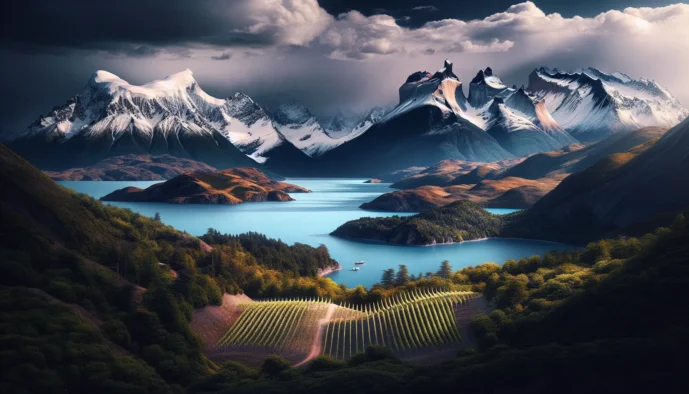Argentina and Chile Keyfacts

Argentina: Key Facts
- Surface Area: 2.78 million Km² – The eighth-largest country in the world, stretching from the tropics to the sub-Antarctic.
- Population: Roughly 46 million people – A vibrant mix of European, indigenous, and mestizo heritage, united by a passion for football, tango, and asado (barbecue).
- Capital: Buenos Aires – 3 million people (15 million in the metropolitan area). A city of European elegance, tango rhythms, and bustling markets.
- Official Language: Spanish – Spoken with a distinctive Italian-influenced accent, especially in Buenos Aires.
- Religion: Predominantly Catholic – But with a secular twist, blending indigenous and immigrant traditions.
- Currency: Argentine Peso (ARS) – 1 USD ≈ 1,000 ARS (as of 2023, but check current rates). Cash is king, especially in smaller towns.
- Weather: Diverse – From subtropical in the north to temperate in the Pampas and cold in Patagonia. Pack for all seasons!
- Biodiversity: Rich and varied – From the wetlands of Iberá to the glaciers of Patagonia, Argentina is a nature lover’s paradise.
- Protected Areas: 47 National Parks – Including Iguazú, Los Glaciares, and Tierra del Fuego. Nature’s playground.
- National Beverage: Mate – A bitter herbal tea shared among friends. It’s not just a drink; it’s a social ritual.
- Gastronomy: Asado, empanadas, and dulce de leche – A carnivore’s dream with a sweet finish. Don’t forget the Malbec wine!
- Export Products: Beef, wine, and soybeans – Argentina feeds the world and keeps it merry with its world-class wines.
- Culture: Tango, football, and literature – Home to Borges, Maradona, and the sultry dance of Buenos Aires.
- Artists: Diego Maradona, Lionel Messi, Jorge Luis Borges, and Astor Piazzolla – Legends in sports, literature, and music.
- Best Period to Visit: Spring (September to November) and autumn (March to May) – Mild weather, fewer crowds, and stunning landscapes.
- Unique Features: The land of extremes – From the highest peak in the Americas (Aconcagua) to the southernmost city in the world (Ushuaia).
Chile: Key Facts
- Surface Area: 756,096 Km² – A narrow strip of land stretching over 4,300 km from the driest desert to the icy south.
- Population: Roughly 19.5 million people – A blend of indigenous cultures and European immigrants, with a strong sense of national pride.
- Capital: Santiago – 7 million people. A bustling metropolis surrounded by the Andes, offering a mix of modernity and tradition.
- Official Language: Spanish – Spoken with a clear, melodic accent.
- Religion: Predominantly Catholic – With a growing secular influence and indigenous spiritual traditions.
- Currency: Chilean Peso (CLP) – 1 USD ≈ 900 CLP (as of 2023, but check current rates). Cards are widely accepted, but cash is handy in rural areas.
- Weather: Varied – From the arid Atacama Desert to the Mediterranean climate of central Chile and the cold, wet south. Pack accordingly!
- Biodiversity: Unique ecosystems – From the driest desert to ancient forests and fjords. Chile is a biodiversity hotspot.
- Protected Areas: 41 National Parks – Including Torres del Paine, Lauca, and Vicente Pérez Rosales. A haven for adventurers.
- National Beverage: Pisco Sour – A tangy cocktail made with pisco, lime, and egg white. It’s a national treasure.
- Gastronomy: Seafood, empanadas, and pastel de choclo – Fresh flavors from the Pacific and hearty dishes from the Andes.
- Export Products: Copper, wine, and salmon – Chile is the world’s largest copper producer and a rising star in the wine industry.
- Culture: Cueca, poetry, and wine – Home to Pablo Neruda, Gabriela Mistral, and the soulful cueca dance.
- Artists: Pablo Neruda, Violeta Parra, and Arturo Vidal – Icons of literature, music, and sports.
- Best Period to Visit: Depends on the region – Summer (December to February) for Patagonia, spring (September to November) and autumn (March to May) for central Chile.
- Unique Features: The longest country in the world – From the driest desert to the end of the world (Cape Horn).